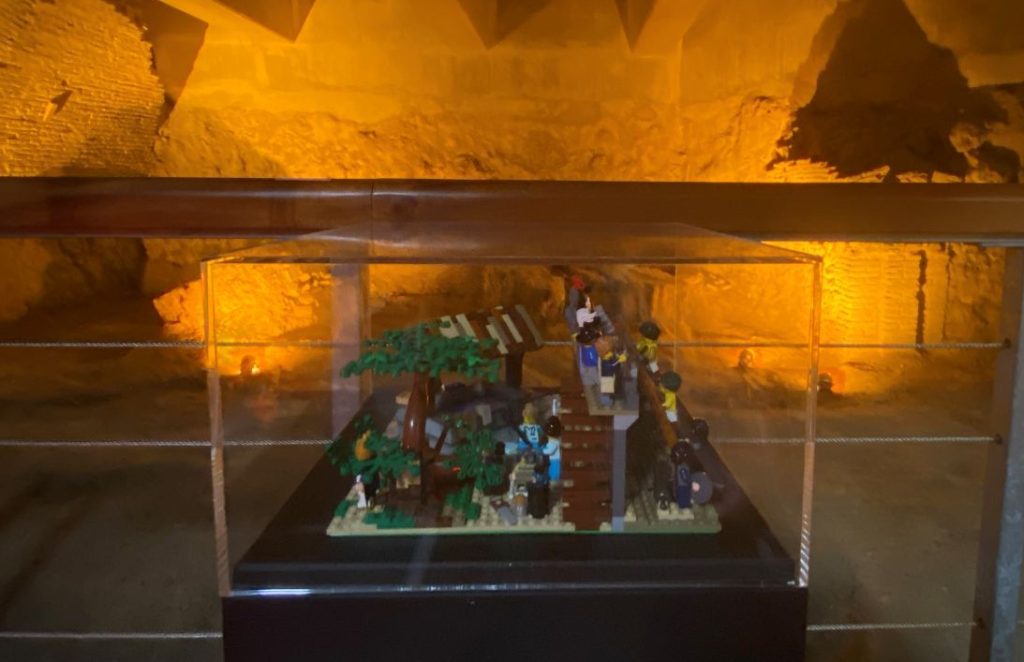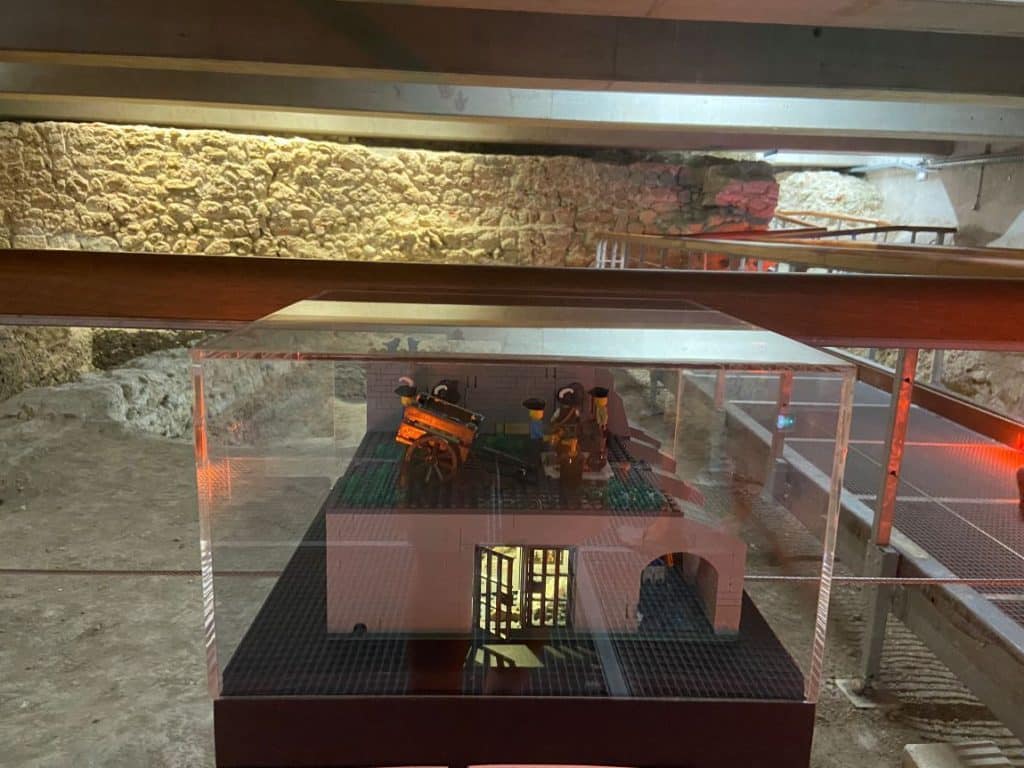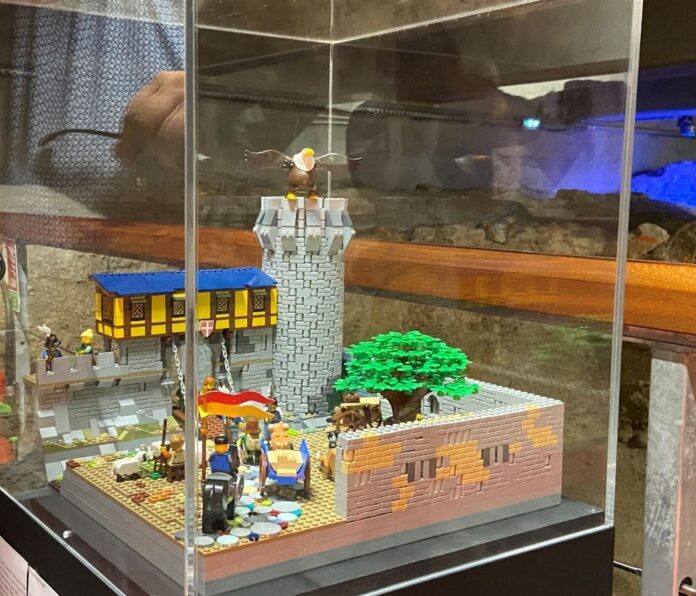The Nissa Briqua exhibition opened its doors this Tuesday. Organized by the HistoBriques association, it honors the military history of Nice through… LEGO®. An immersion in the Archaeological Crypt, Toja Square.
From July 1st to November 30th, the exhibition highlights the key stages of the history of the Bay of Angels since the 14th century. It is spread across two distinct locations: the Archaeological Crypt (Toja Square) and the Bellandarium (Bellanda Tower). For five months, iconic yellow figurines will take over Nice.
Transmitting in a playful manner…
55,000 bricks to tell the tale of Nice’s military exploits. This is the mission assigned to HistoBriques. In the depths of the Archaeological Crypt, just a few steps allow you to admire the work provided by the association, which consists of history, protohistory, and prehistory enthusiasts. The installation of tramway line 1, the underground excavations, the Pairolière gate, the exploits of the illustrious Catherine Ségurane, the assaults by Louis XIV… Everything is reconstructed to a tee.

Photo credit: F.B.

Photo credit: F.B.
Short explanatory texts, available in French, English, and Italian, shed light on these masterpieces made from LEGO® figurines. Atossa, under her pseudonym, leads HistoBriques with Darius. She mentions a “long process” to stay true to the reality of the facts: “there was important groundwork, particularly with the mediators. No one should be forgotten.”
… to the new generation
What about the young people of Nice? Have they been taken into account in the equation? For Atossa, the answer is obvious: “it’s the most important thing,” she asserts without hesitation. She continues: “we’ve done our best to include little nods and hidden elements. The goal is for children to question and want to learn more about what they see.” HistoBriques didn’t choose LEGO® by chance: “who isn’t drawn to these little figurines?,” she enthuses.
Beyond the visual aspect, visitors will be immersed in a true auditory experience thanks to the added audio environments. All focus on the end of the Middle Ages, the modern era, and the beginnings of the contemporary era (carts, water fountains, etc.). “We want people to leave this crypt with smiles on their faces and stories to tell!” concludes Atossa.


